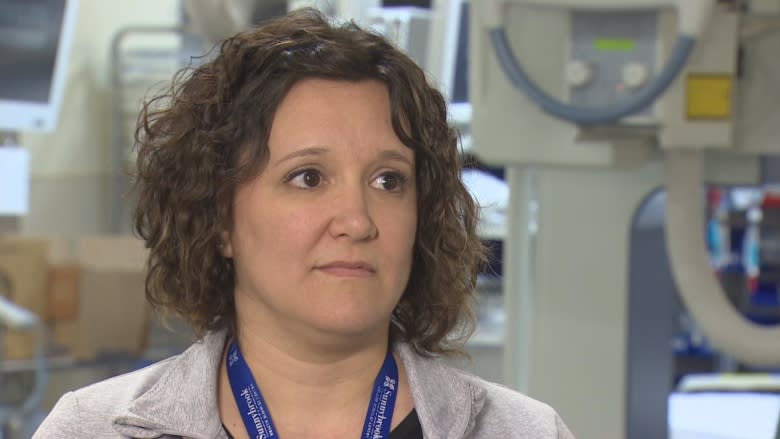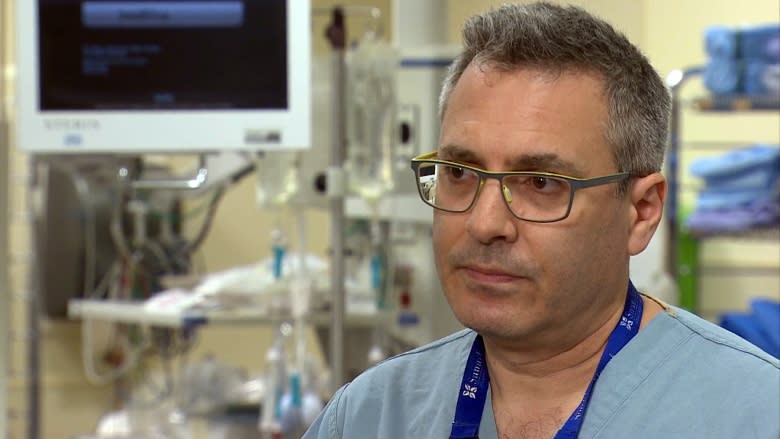Code Orange: How Toronto's Sunnybrook hospital knew how to handle Monday's van attack
Miranda Lamb's day was already busy; the trauma nurse at Toronto's Sunnybrook Health Sciences Centre was dealing with a unit that was overcapacity, all of its beds full.
But when a colleague with emergency medical services approached her with news that "something big had happened on the street," Lamb knew what had to be done.
The hospital, which is Canada's largest trauma centre, was in "Code Orange" — an emergency code that notifies staff of a mass casualty event.
"We try to keep it very calm," Lamb said. "It's a calm, organized chaos. Everybody just goes into their role; everybody steps up."
By mid-afternoon Monday, Sunnybrook had received 10 victims from Toronto's deadly van attack, which had played out in minutes along a two-kilometre stretch of nearby Yonge Street, less than 10 kilometres away from the hospital's main campus.
Two people were pronounced dead on arrival, five remain in critical condition, and three are listed in serious condition.
The tragedy marked the country's second big catastrophe this month, leaving 10 dead and another 14 injured. Two weeks earlier, a bus taking the Humboldt Broncos junior hockey team to a playoff game in Saskatchewan collided with a transport truck, killing 16.
As Canadians increasingly worry about an overburdened health-care system, with crowded hospitals and overstretched staff, hospitals of all sizes are showing they still have a remarkable ability to respond to unexpected disasters with impressive efficiency.
'This is what they're trained to do'
"What we do is transform chaos into calm," said Dr. Alan Drummond, with the Canadian Association of Emergency Physicians.
He said that the way first responders, nurses and doctors were able to leap into action in both a large urban centre, like Toronto, and a rural setting, like in Saskatchewan, speaks highly of the level of professionalism in the pan-Canadian emergency experience.
"This is what they're trained to do, this is what they live to do," said Drummond, who is also an ER doctor at the Perth and Smiths Falls District Hospital in eastern Ontario.
Training for such mass casualty events is always ongoing at Sunnybrook, says the hospital's surgeon-in-chief Dr. Avery Nathens.
"Every drill that we have has made us a little bit better at responding. There's always opportunity for improvement, [but] what we've learned from the past year through the drills was helpful for what came across to Sunnybrook."
The hospital has been running mock Code Oranges for "several months" to prepare for events such as this, Lamb said.
"How to manage them, how to go in action. But in addition to that, the trauma teams here are trained in taking care of critically ill patients in the initial stages of trauma — in what we call the critical hour," she said.
'Unimaginable'
Sunnybrook nursing staff learn how to deal with trauma patients through a mandatory trauma nursing course. And all staff go through something called a "tabletop exercise," meant to bring together teams from across the hospital to run through a mass casualty scenario.
Unlike a mock Code Orange, this exercise doesn't involve simulated patients; rather it's discussion-based, with teams talking through in detail how they'd respond.
After tragedies of Monday's magnitude, staff are debriefed — an exercise that encourages everyone to openly assess their teams and the hospital's performance to see what, if any, lessons can be learned.
Trauma nurse Cristina Choy called the experience, including the number of victims and the extent of their injuries, "unimaginable."
"I think it is very important to debrief after any situation, especially what happened [Monday]," she said. "I think debriefing helps us [with] what went well, what didn't — but also to get things off our chest as nurses.
"A lot of the times we just bottle things up and that's not good."
Nathens said he knows that staff will be affected by a tragedy like this. "And there will be a lot of debriefing to understand how we can better support our own staff and how we can do this next time, should it ever happen again."
After a pause, he adds: "And it likely will."
As for Drummond, he said he has nothing but praise for Canada's health-care workers, especially those who responded to the tragedies in Saskatchewan and Toronto.
"Both of these experiences have shown that Canadians should have confidence in their emergency-care system and should be proud of the people that work there."




